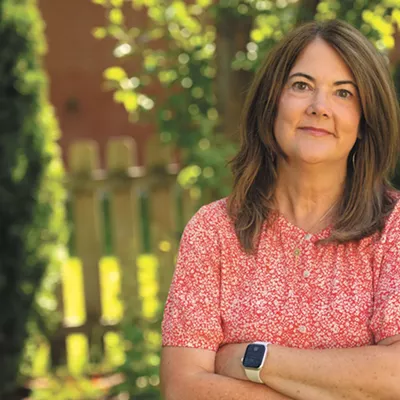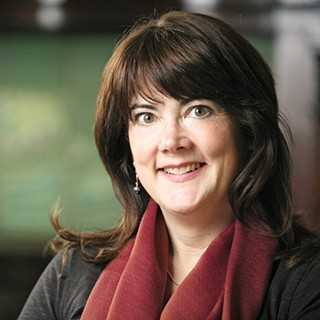Some day soon, your doctor may hand you an information prescription instead of a medication sample or a referral to a surgeon.
That’s right. You’ve got homework.
You’ll be provided with written materials or access to information in the form of video or audiotapes or Web-based tutorials. You’ll learn more about your diagnosis, as well as the pros and cons of different treatment options, and perhaps even watch video interviews with people who chose different remedies for your particular condition. Then you’ll be guided through questions to discern more about your personal preferences and values in the outcome of your treatment. At the end of your inquiry, you may be asked a few questions to assess your level of understanding of the condition, its treatment and possible outcomes, and given the opportunity to select what course of treatment you are considering. Armed with this one-page summary, the result of what’s called shared or informed medical decision making, you’ll head off to the doctor to discuss and fine-tune your treatment plan.
Why not just let the doctor decide and skip the hassle of learning about your condition? After all, that’s why you pay those hefty insurance premiums and co-pays, isn’t it?
Although some medical situations direct doctors to just one treatment option, many conditions present a variety of choices. And for more disorders than you might think — including chronic lung disease, heart disease and diseases of the reproductive organs — the best courses of treatment have yet to be proven.
Another source of confusion is that treatment for a number of conditions varies a lot by where the patient happens to live. Much of that variance is considered “unwarranted” — not related to medical science or optimal patient outcomes. Rather, treatment decisions may be influenced unduly by factors such as the propensity for doctors to utilize available diagnostic and surgical interventions, patients’ expectations that more care is better, and patients’ lack of understanding of the pros and cons to the treatments they’re considering.
Further complicating matters are the patient’s own pesky feelings and priorities. Research shows that even when there is general consensus that a patient really does require treatment by all the current standards — for example, a patient with knee arthritis has serious pain and loss of function, and doctors can see the joint damage on x-rays — it turns out that as few as 15 percent of patients may actually want to proceed with surgery.
Shared decision making is an attempt to bring some order to the situation, helping patients gain access to the best information available and providing ways to improve communication with their doctors.
Washington became the first state to endorse shared medical decision making in 2007. But the mandate was unfunded, says Leah Hole-Curry, coordinator for Washington state’s Health Technology program, which is in charge of assisting with the transition. Still, her office is active in educating health care providers about the concept.
Proponents hope that shared decision making will lead to better results for patients. And they’re hoping to save money in the process.
Many studies show decreased elective surgeries, with as many as 25 percent of patients deciding against surgery among informed patients, while some studies don’t show a decline in surgery rates.
But regardless of the effect on surgeries, using decision aids produces happier, healthier patients. “[The studies] do show consistently that patients have less decisional conflict and generally have better health outcomes” when shared decision making is employed, says Hole-Curry. “They follow their treatment protocols better, which increases positive outcomes. And if the treatment didn’t work out, they tend to have a more positive view.”
Hole-Curry says shared decision making can be challenging for physicians because it changes how time is allocated during a patient visit. The reward is not only improved patient satisfaction but also potentially decreased liability. Included in the state’s endorsement of shared decision making was a clause recognizing it as the highest level of informed patient consent.
The first major health concern to try out shared decision making in the state is the Group Health Cooperative. In November 2008, they received a $500,000 grant from the Commonwealth Fund to evaluate the impact of patient decision aids throughout the organization’s Washington state network. Videos are already being made available to patients considering treatment for orthopedic, cardiac and women’s health issues. Later in the year, the cooperative will add neurosurgery and urology decision aids.
“The videos are a great supplement to the information and advice we give as clinicians to our patients,” says Chris Cable, MD, assistant medical director, Consultative Specialty Services and Acute Care (CSS), in a newsletter for members. “Patients appreciate having the information available to them at home where they can go over it with their family and can review it again and again to make sure they really understand all of the treatment options they have.”
And this paradigm shift in health care is no fad. In the massive stimulus package passed by Congress last month, $1.1 billion was included to study the actual effectiveness of various drugs, devices and medical procedures, so patients and doctors will have the best information they can get when they make decisions together.
Evaluating Evaluations
Finding unbiased, high-quality decision aids and getting access to them can be tough for patients trying to go it alone. These pioneers do have some help however. The Website affiliated with the Ottawa Health Research Institute includes not only lists of patient decision aids for various conditions, but also rates the quality of those aids and gives information on how consumers can access them — many are free, while some require a subscription or payment.
Leah Hole-Curry recommends decision aids by HealthDialog, a for-profit company, but laments that they are not available to the general public. The Foundation for Informed Medical Decision Making, which worked with HealthDialog in producing the aids, will make review copies available to interested parties. And patients can check to see if their employers or health care providers are members of Health Dialog to request access. The company does sell its programs to interested providers.
For help making medical decisions, check out: The Foundation For Informed Medical Decision Making, at informedmedicaldecisions.org; Ottawa Health Research Institute, at decisionaid.ohri.ca/decaids.html; For more information on variations in medical practice see the Dartmouth Atlas of Health Care, at dartmouthatlas.org.



















